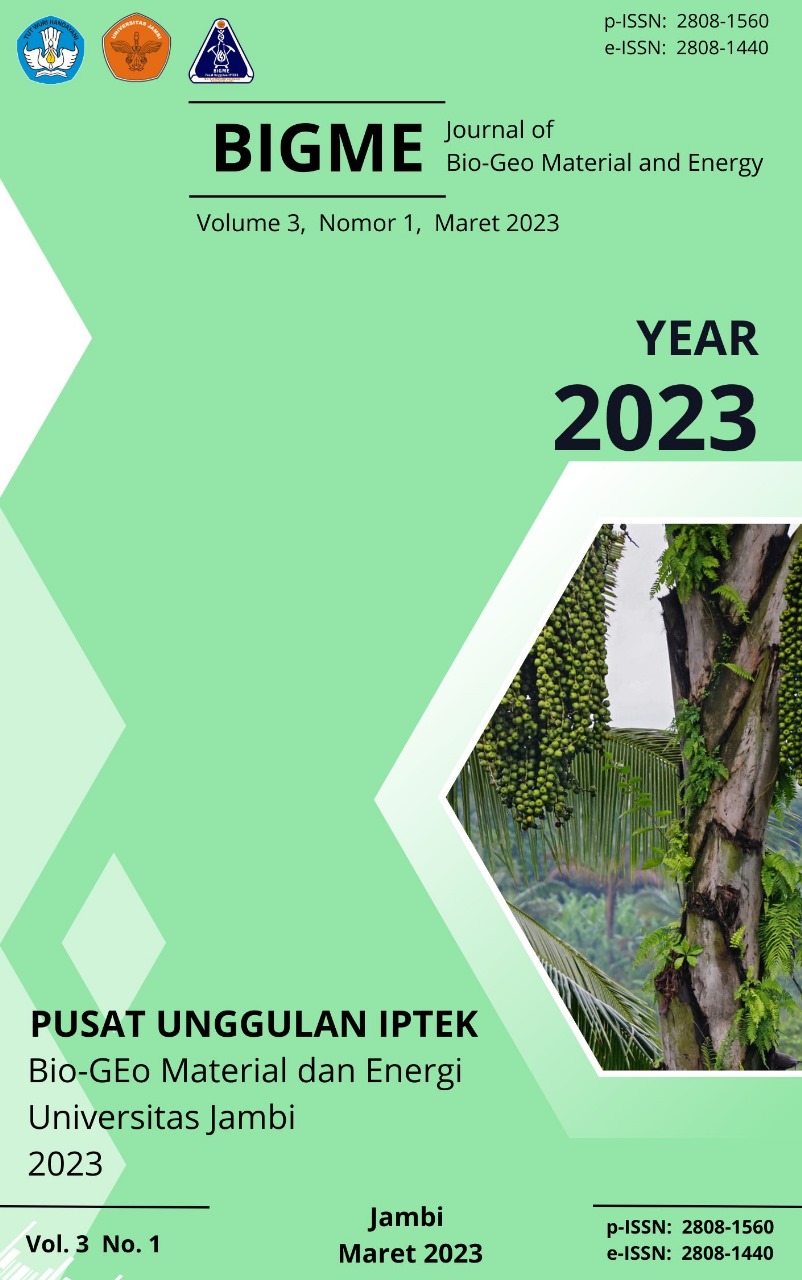Modification of Yellow Yam Starch (Dioscorea alata) Using Various Solvent Ratio and Its Application for Edible Film
Starch Modification; Yellow Yam Starch; Edible Films; Volume, Starch composite
DOI:
https://doi.org/10.22437/bigme.v3i1.30914Keywords:
Pati uwi ungu, Modifikasi pati, edible filmAbstract
Edible films from native starch have some weaknesses, one of which is the water vapor transmission rate is still high. To lower the rate of water vapor transmission may be used starch composites starch. This study aimed to obtain ethanol volumes that can produce modified starch with the smallest size, produce composite starch for edible film and to determine the characteristics of edible film made out of natural starch and edible film from composite starch (natural starch and modified starch). This research was conducted in 3 stages, namely: extraction of yam starch, modification of yam starch by precipitation method and production of edible films from natural starch and composite starch. This study was designed to produce modified starch using 5 levels of ratio between starch paste volume and ethanol volume 1:5, 1:7.5, 1:10, 1:12.5, 1:15. The results showed that the treatment of ratio 1:15 (1500 ml ethanol) produced the smallest particle size of starch 3,417 x 5,945 µm up to 15,038 x 16,708 µm with starch yield of 80%. Edible films made from composite starch have different characteristics than natural starch. Edible film from composite starch produces higher thickness values of 0.156 ± 0.006 mm, lower solubility of 27.385 ± 3.808%, lower transparency of 10.657 ± 0.278% /mm and lower water vapor transmission rate (WVTR) of 18.423 g / m2 hour, and compressive strength of 841.8 ± 6,823 gF than natural starch edible film.
Downloads
Downloads
Published
How to Cite
Issue
Section
License
Copyright (c) 2023 ulyarti ulyarti, Muhammad Azizi Gunawan, Silvi Leila Rahmi

This work is licensed under a Creative Commons Attribution 4.0 International License.














